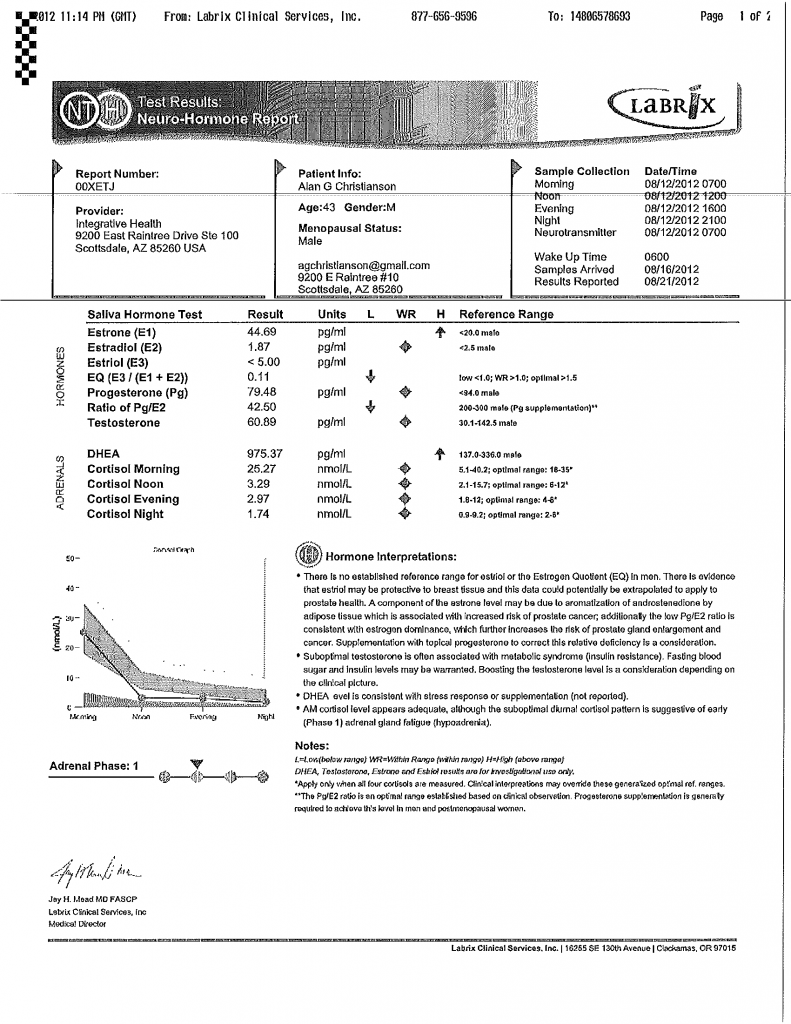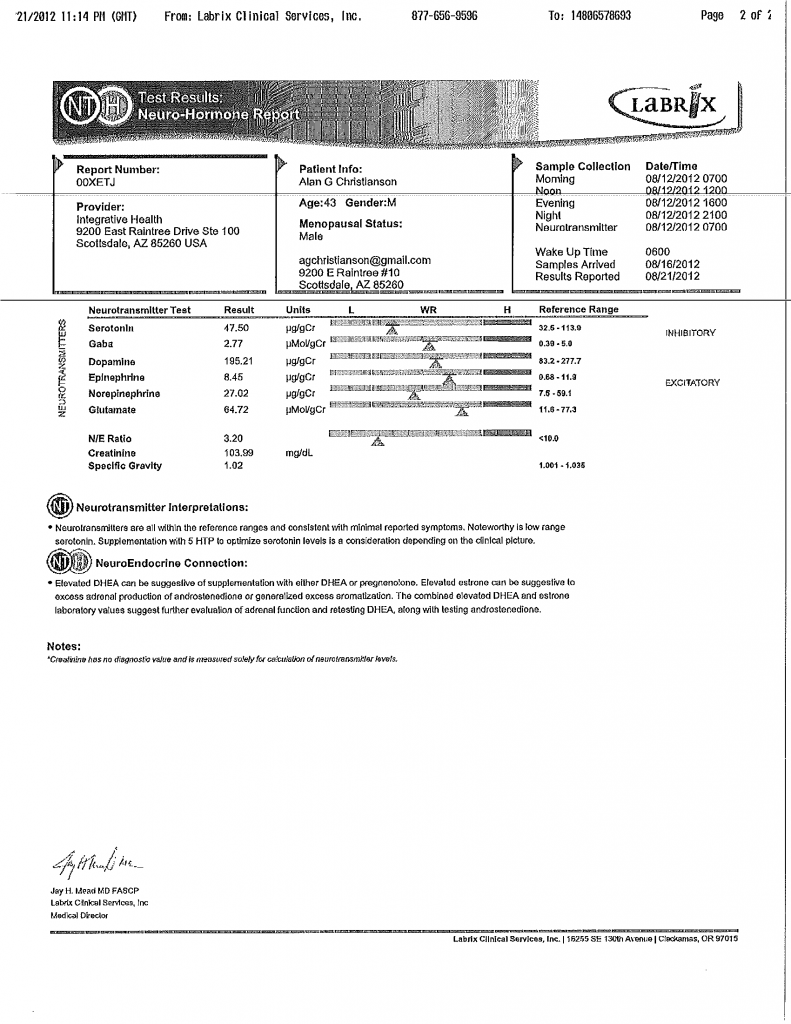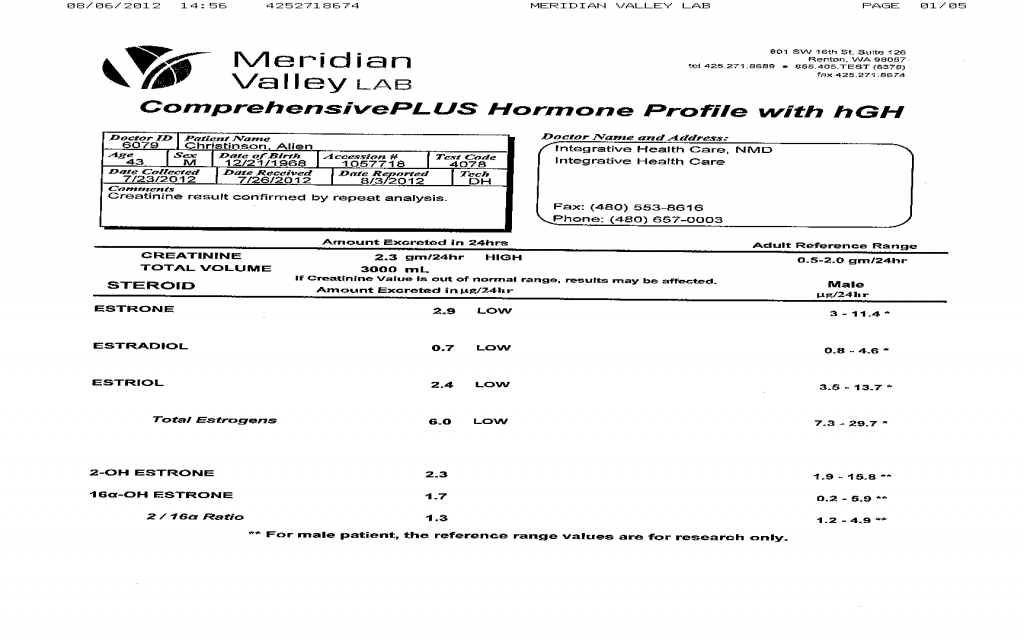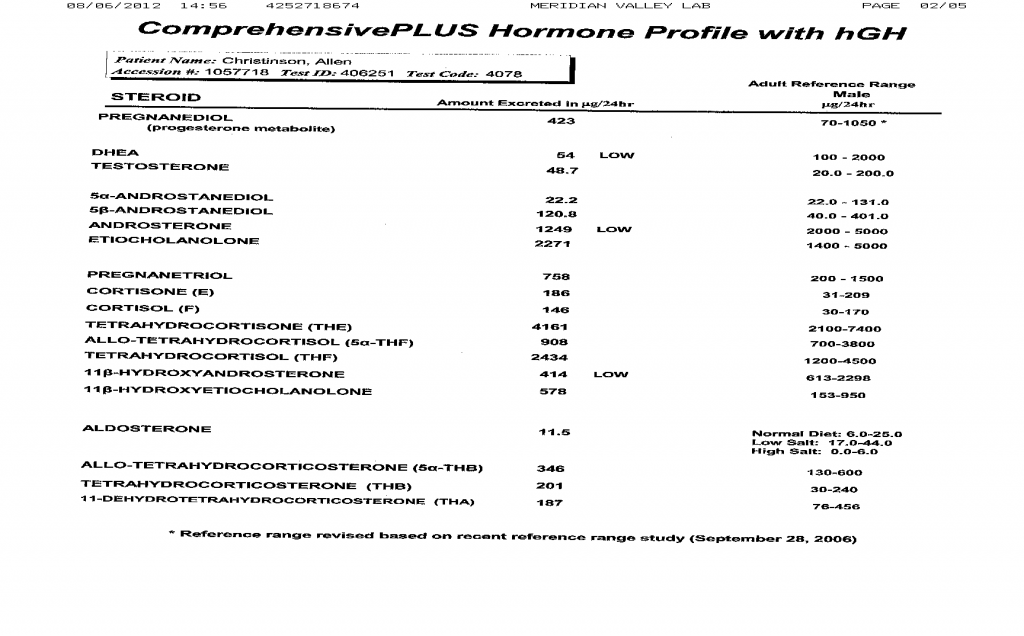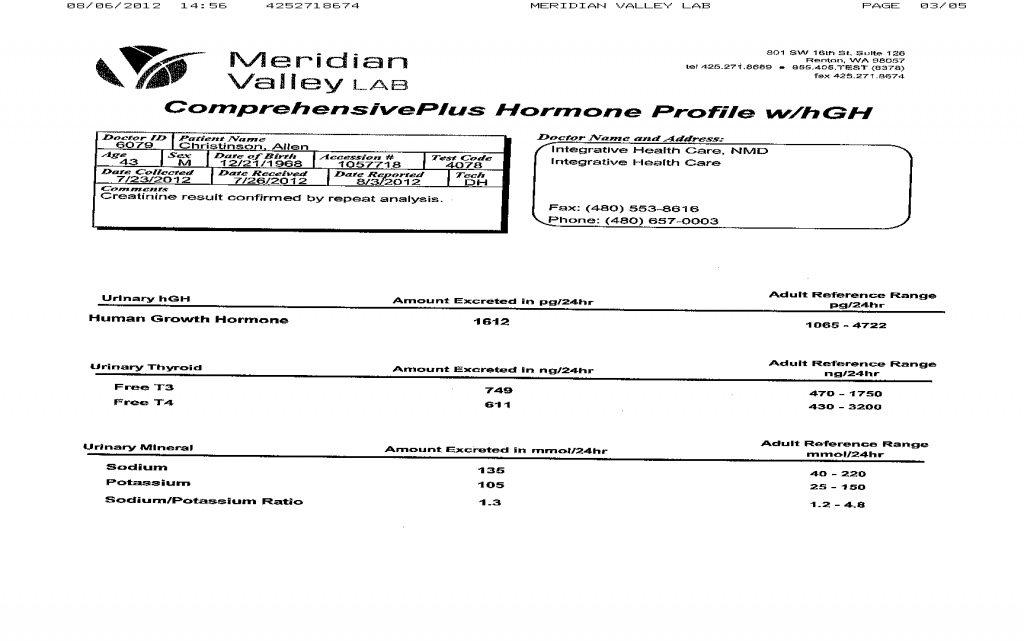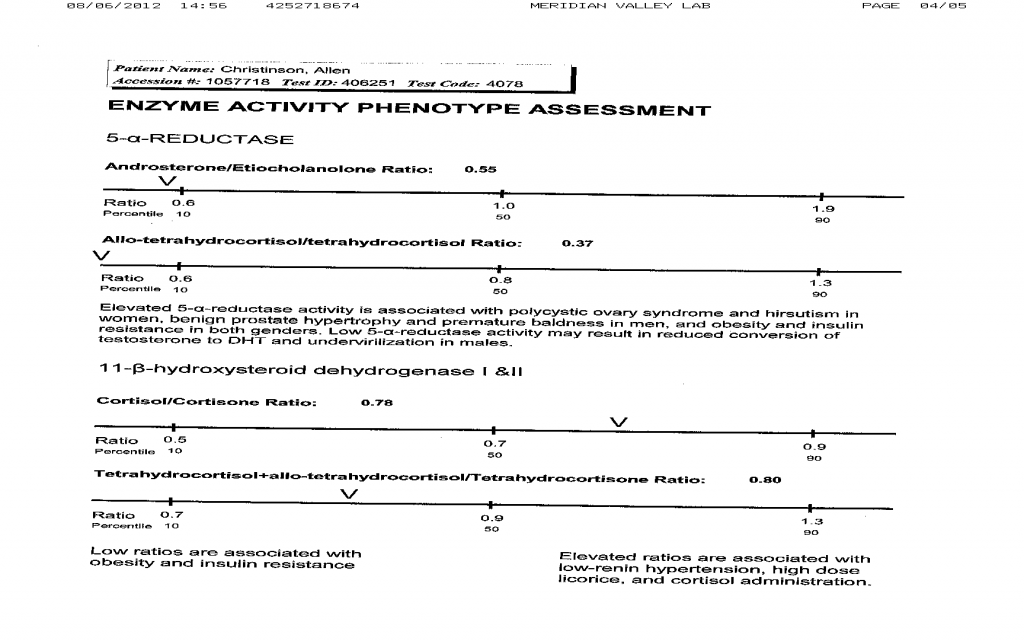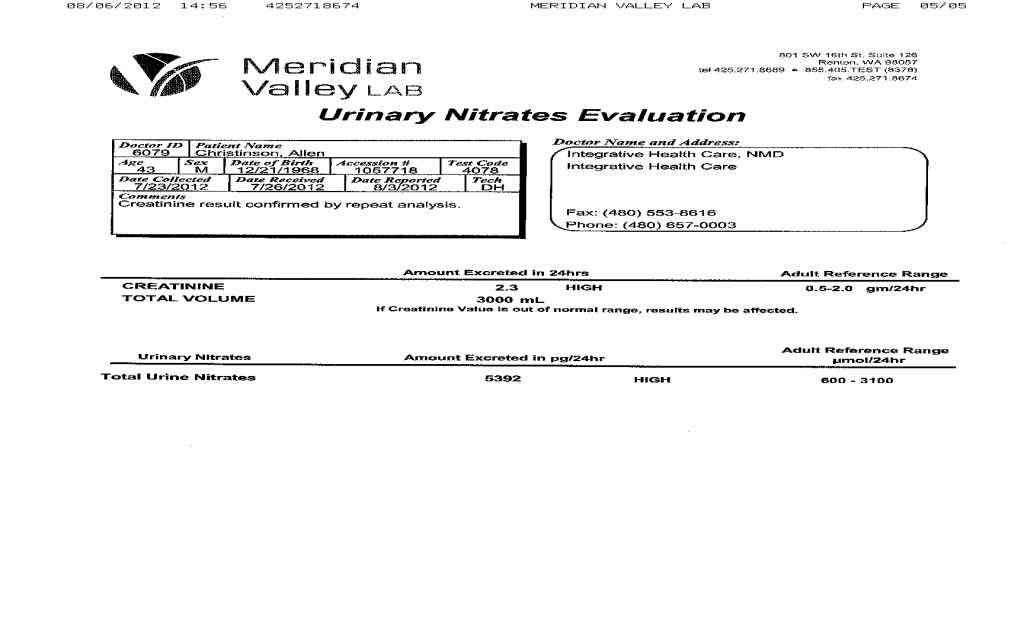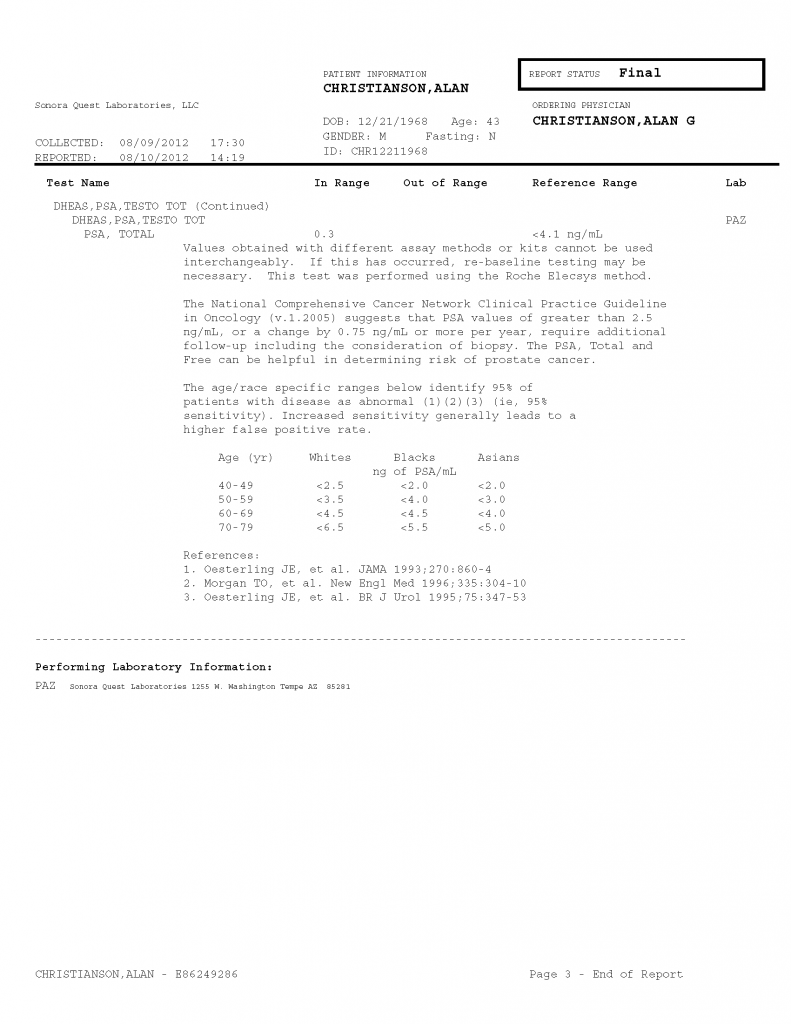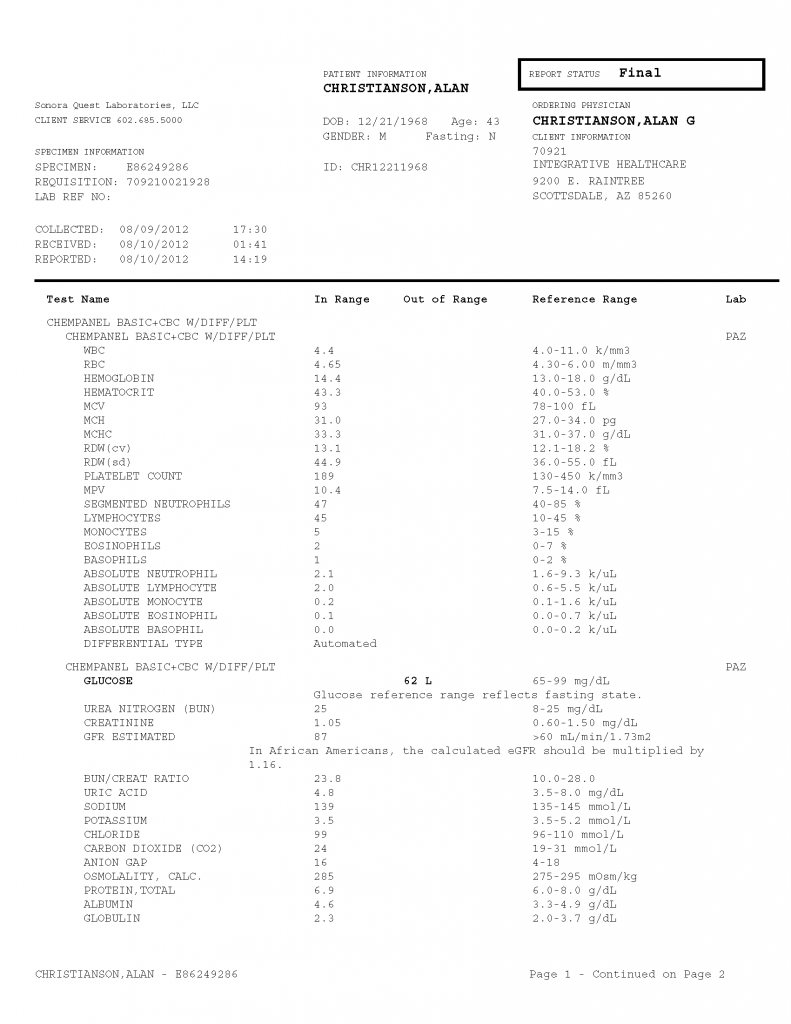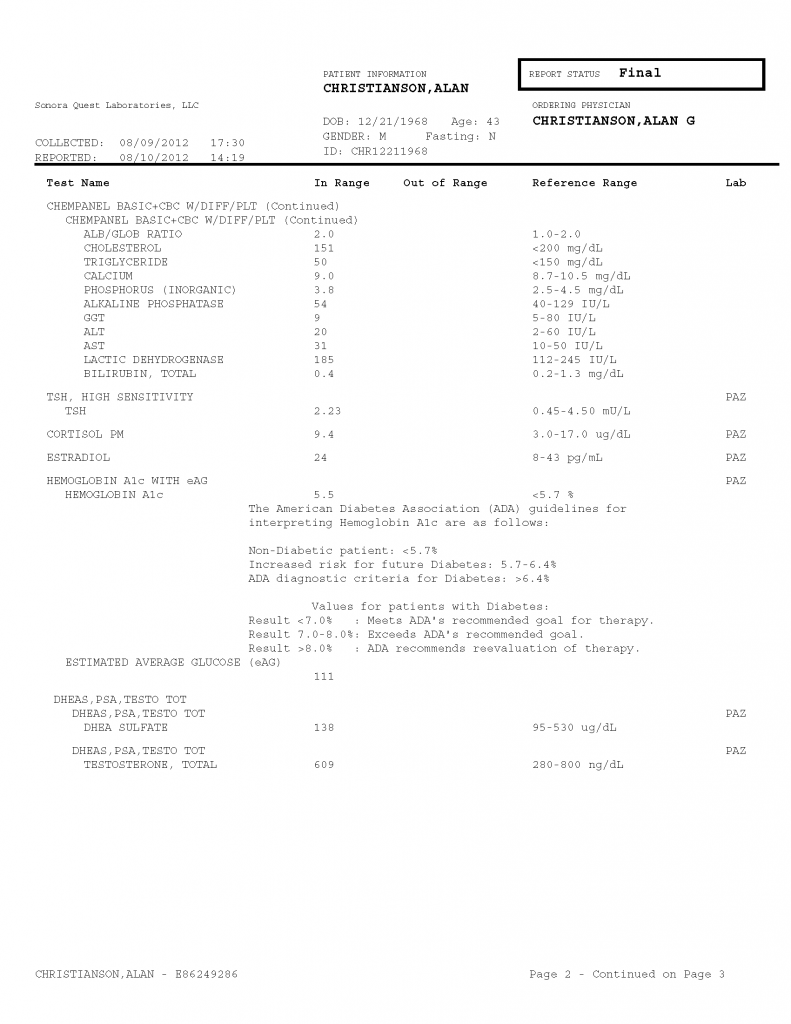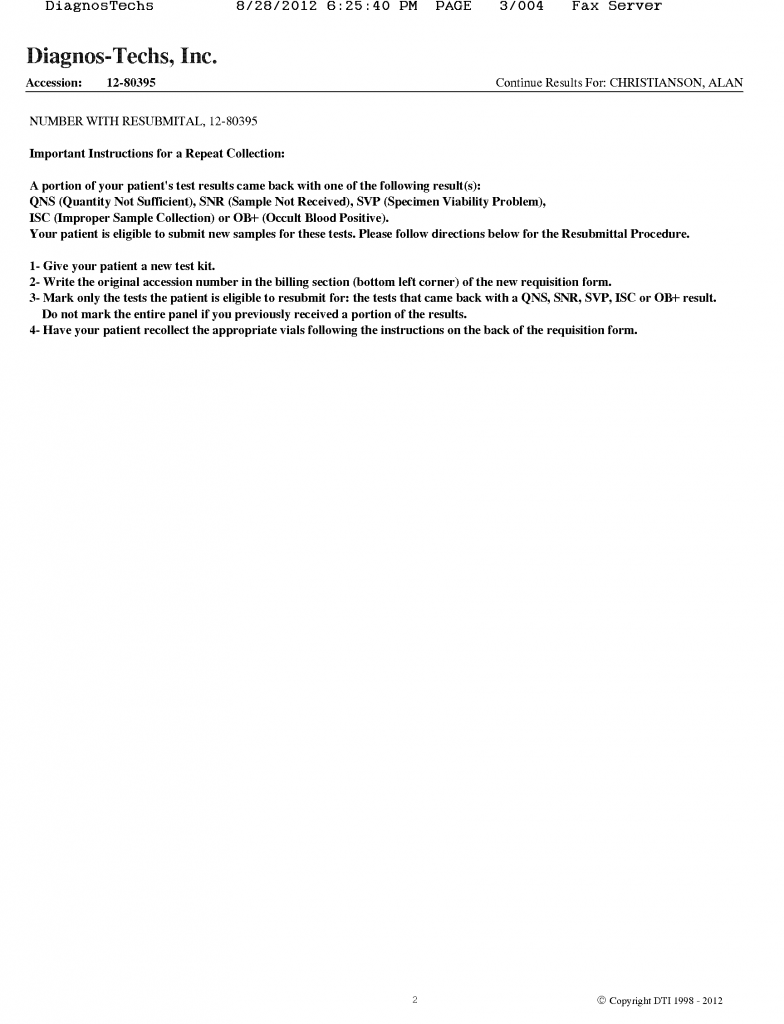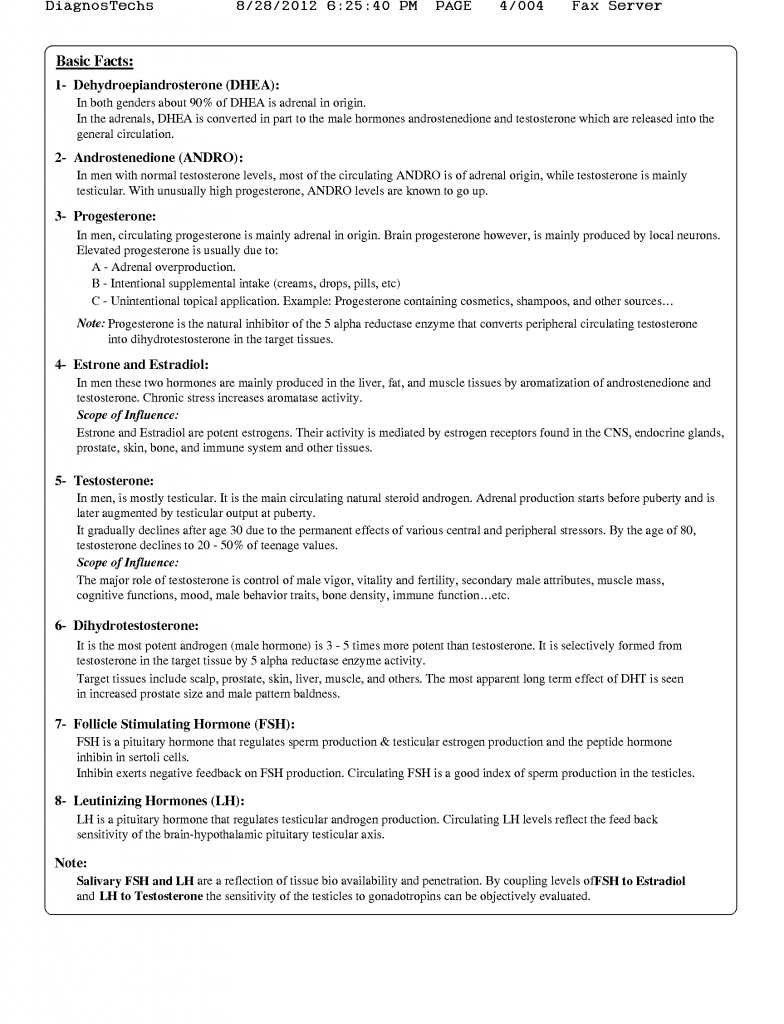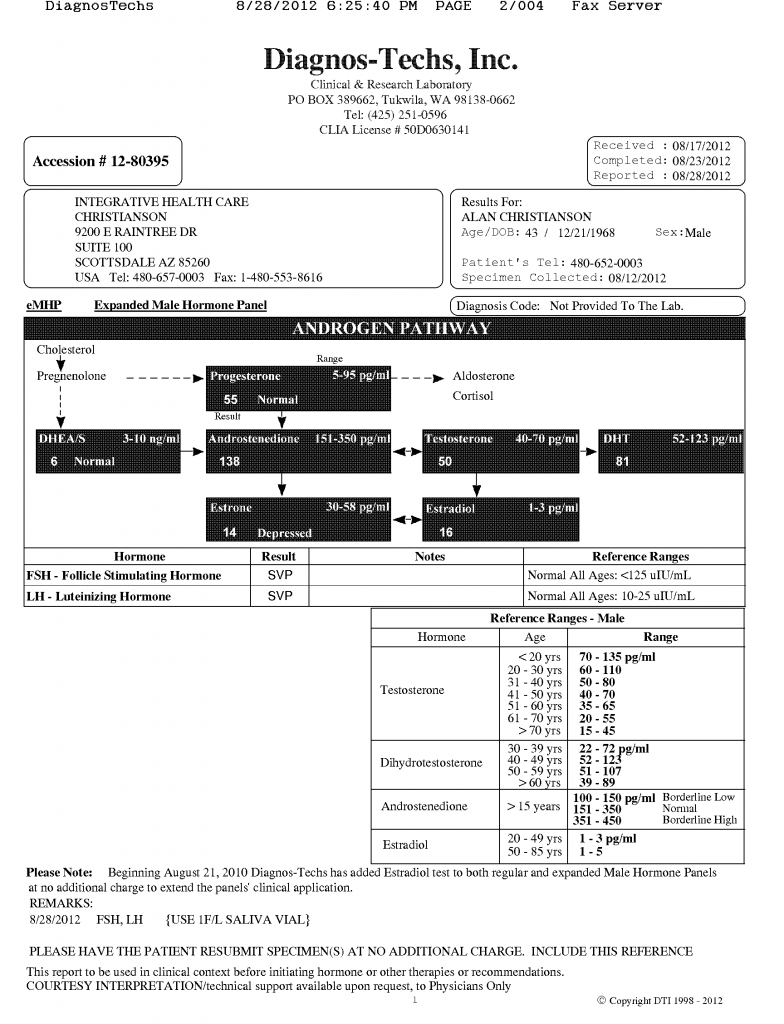Urine Tests
This is another big category that I want to talk about. There are four different versions of urine tests that are worth mentioning:
- 24 hour
- Spot
- Circadian
- Circadian-Spot (known as the Dutch test)
The general impetus behind urine tests is that hormones can be found in the urine. The added benefit is that, because the hormones take longer to get there, you can level out and determine how they might vary from moment to moment.
As I mentioned before, urine tests could be very useful in determining if you are currently in a disease state that causes erratic, random overproduction of your hormones.
It gives us a bigger picture, which can often point to trends that can provide more information on your well being. This is the key benefit of a 24-hour urine test.
Spot hormone urine tests can check your hormones at a set point in time. The drawback is that the time in which you take the test is not necessarily reflective of your hormone levels at that exact time.
Instead, you need to consider that your hormones need between 1 – 8 hours to come out in your urine.
This brings us to a new method known as the Dutch test (which is a combination of options 2 and 3 that I have mentioned above).
The Dutch test seeks to take multiple samples, throughout the day, in order to gain a clearer picture of your full day’s production of hormones.
This, ultimately, seeks to combat the fact that the range of hormone production to urine output is so varied, you cannot put an accurate timestamp on it.
Drawbacks
Some of the drawbacks we can consider for urine tests include:
- Conjugated Hormones – Where the hormones are essentially “bound up” with other byproducts in your system.
- Clearing Hormones – Not all your hormones are cleared through your urine, as some have to go through your stool (which results in the fractions being inconsistent).
Benefits
Urine tests are really only good for how you dispose of hormones, and how much your output is at extremes.
Ultimately, this means that urine tests are only good if you are not concerned with the exact time of production.
They are, however, good for the disease states, which include things like:
- Cushing’s disease
- Pheochromocytoma
- Carcinoid syndrome
They are not really useful for normal hormones, in the context of daily production. This includes everything from:
- DHEA
- Estrogens
- Androgens
- Progesterone
- Growth hormones
- Thyroid hormones
Salivary Tests
In the same way that urine tests are delayed, salivary tests are very acute – which means that they relate to a very tight and specific point in time. This makes salivary tests a great tool for measuring cortisol slope.
Not with regards to the whole output of cortisol, rather the way our cortisol output varies throughout the course of the day.
This draws back to our previous point about free and total hormones. Your saliva is looking at the free fraction, and not the total amount of hormone.
Another limitation involved with salivary tests is that some hormones, simply by their molecular size, get into the saliva. Bigger hormones, because of their size, are unable to get into your saliva due to their fractions.
There are hormones in the saliva, and then there are hormones which are bound up in the blood cells. Therefore, it is not uncommon to have some microscopic amounts of blood cells in your saliva.
Because there can be large amounts of hormone tied into your blood cells, even microscopic levels in your saliva can skew your levels.






